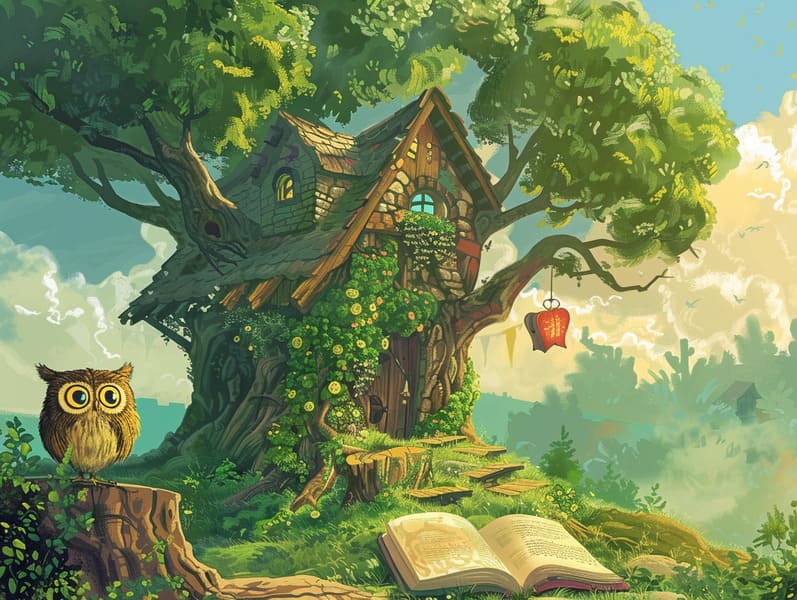A Brief History of Children's Fairy Tales and Its Immortal Appeal.
A Brief History of Children's Fairy Tales and Its Immortal Appeal.
Blog Article

Famous fairy tales have historical significance. These stories have been passed down from one generation to the next far before they were ever transcribed. They arose from a variety of backgrounds, including Western traditions. They were initially conveyed among mature audiences, often carrying themes and messages mirroring the societal norms and beliefs of the time.
The Grimm brothers, the two Grimm brothers, were among the first to collect many of these beloved narratives. Their anthology, "Grimm's Story Collection," included narratives like "Ashenputtel," "The Bread Crumb Trail," and "Little Snow White," which have since become essentials in the world of beloved fairy tales. Similarly, H. C. Andersen's whimsical tales, such as "The Sea Maid," and "The Little Duckling," have captured hearts worldwide, solidifying their place in the pantheon of treasured fairy tales.
Despite their historical roots, traditional fairy tales remain as relevant as ever, especially as bedtime stories for kids. These fantastical tales are now available in different formats, including artistically illustrated books, charming animations, and digital fairy tales.
Their unwavering allure can be linked to several captivating elements:
Vital Lessons: Old fairy tales often share important moral lessons. Stories like "The Shepherd Boy and the Wolf" teach the significance of being truthful, while "The Hare and the Tortoise" highlight the virtues of determination and humbleness. These narratives offer little ones clear distinctions between moral and immoral, developing their moral compass in a subtle yet meaningful way.
Kindness and Comprehension: Old fairy tales frequently portray heroines facing tests and troubles, stimulating listeners to empathize with their struggles and back their triumphs. For instance, "Beauty's Beast" shows us the benefit of seeing inner beauty to comprehend the true being of a character, nurturing understanding and appreciation.
Cultural Comprehension: Many fairy tales are infused with the cultural contexts from which they arose. Delving into these tales can provide illuminating insights into different cultures, encouraging a sense of world awareness and respect.
Imagination and Innovation: The fanciful elements in old fairy tales—fairy godmothers—awaken children’s visions and dreams. These narratives lead readers to imaginary realms, encouraging imaginative thinking and a sense of amazement that stays a lifetime.
Ancient fairy tales are not only charming but also instructive. They function as fantastical tools in promoting various cognitive and emotional skills in kids. When timeless fairy tales are narrated, they advance speaking abilities by teaching new vocabulary and complicated sentence structures. This practice also boosts auditory skills and attention span, as the young keep up with the story, eager to see what happens next.
Furthermore, deliberating the themes and characters of fairy tales can nurture reasoning skills and thought processes. Little ones are guided to see patterns, guess what will happen, and comprehend cause and effect. These explorations also benefit children reveal their thoughts and feelings, boosting their emotional intelligence.
In today’s high-tech era, the accessibility of web-based fairy tales has made these narratives more acquirable than ever. Internet sites and mobile apps make available large libraries of classic fairy tales that can be experienced this site or listened via anytime, anywhere. Fairy tales narrated are particularly common, providing an interactive way for children to enjoy these fascinating tales. Voice books and read-out-loud videos carry characters and settings to life, often supported by entrancing sound effects and music that augment the tale journey.
The unfading fascination of traditional fairy tales lies in their ability to shift to modern days while holding onto their main lessons. Contemporary versions of these narratives often integrate more inclusive figures and modern settings, making them meaningful to today’s audience. However, the fundamental themes of boldness, generosity, and rightness remain unchanged, continuing to strike a chord with young readers of all ages.
Traditional fairy tales also offer a sense of reassurance and homeliness. They impart a well-structured narrative with a unmistakable beginning, middle, and end, often winding up with the finalization of conflicts and the triumph of good over bad. This reliability can be soothing for young ones, spreading a sense of steadiness in an always shifting world.
Classic fairy tales continue to delight and educate new generations, maintaining their majesty and value in modern society. As kids' bedtime tales, they grant access to a perfect blend of wonder and wisdom, enriching moral values, empathy, and creativity. The prevalence of web-based fairy tales and the commonness of fairy tales voiced validate that these timeless fairy tales remain within reach to new generations.
By sustaining and broadcasting these narratives, we continue to esteem the rich tapestry of cultural heritage and cultural heritage. Whether you are seeing a beautifully illustrated book, discovering a cyber collection, or listening on an read-aloud story, the mystique of children's fairy tales is always within reach. These fairy tales highlight of the timeless presence of stories and its ability to hold us together across eras and regions.
Regardless if you are browsing a gorgeously illustrated book, accessing a electronic library, or hearing an sound book, the elegance of traditional fairy tales is always within reach.
These stories convey of the unfading magic of stories and its ability to bond us across time and space, weaving a spell that delights and instructs alike.